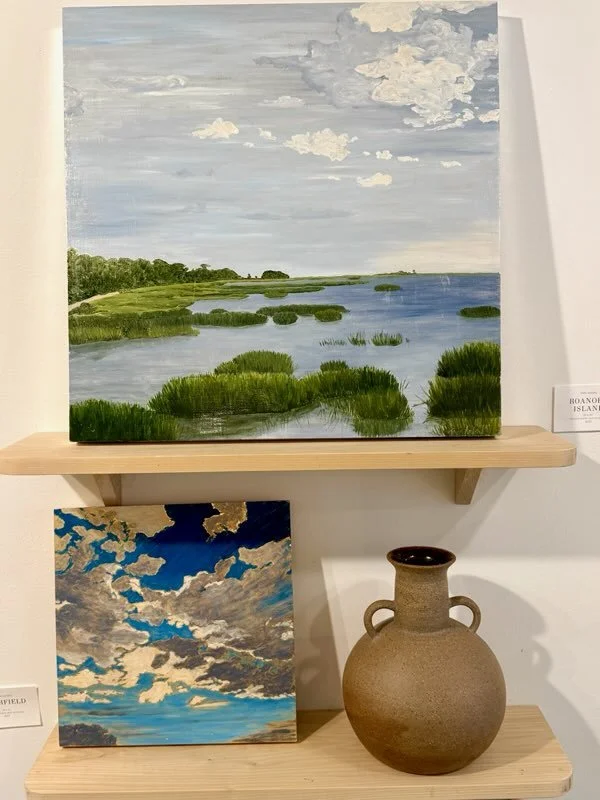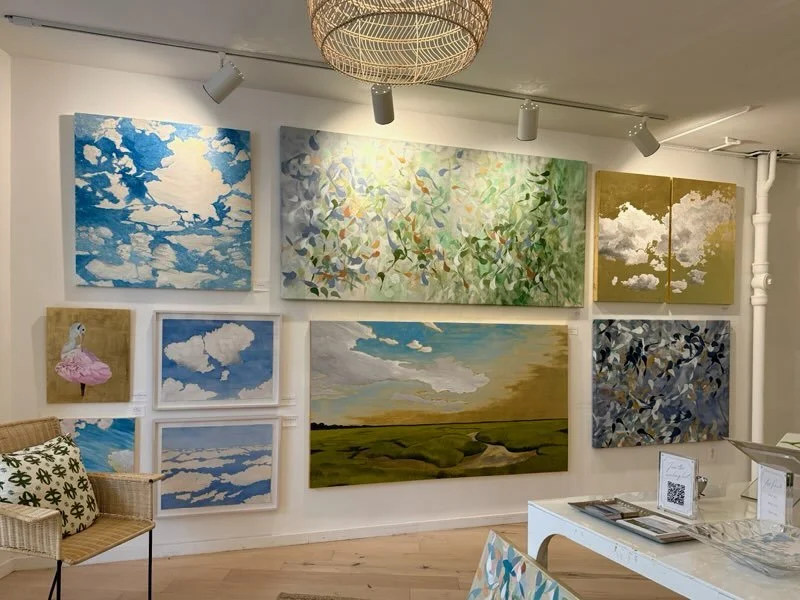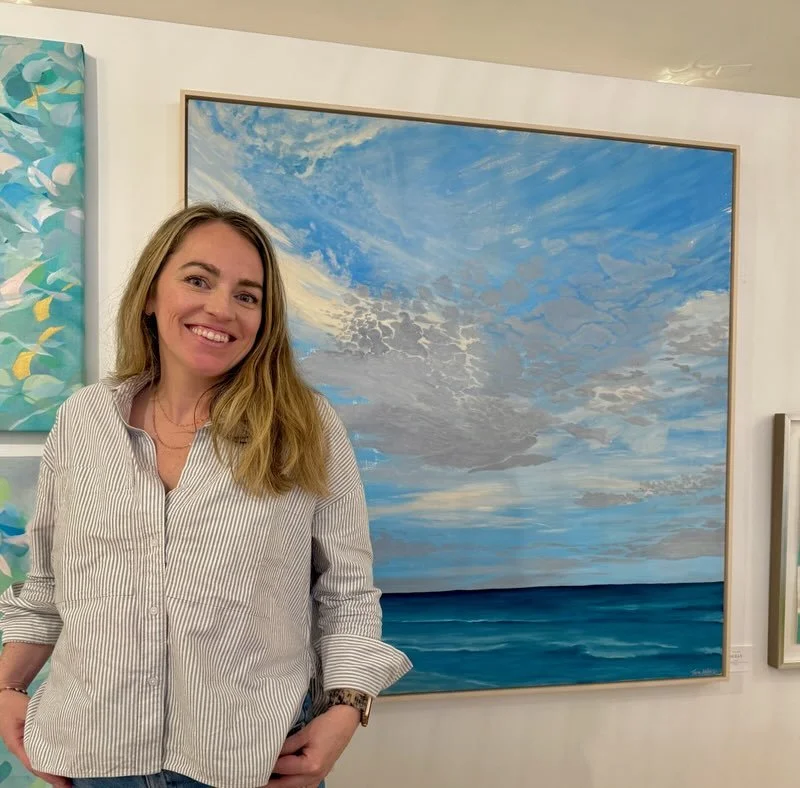Artist Spotlight: A Conversation with Painter Tara Andris
From Childhood Museum Visits to Gilded Canvases
In a recent conversation with contemporary artist Tara Andris, we explored her creative evolution from her early fascination with art to the deeply personal, light-reflective landscapes she creates today. With warmth and insight, Tara shared how a childhood spent wandering the halls of the Nelson-Atkins Museum of Art laid the foundation for a lifelong relationship with visual storytelling.
A Childhood Surrounded by Art
Tara grew up in Kansas City, where the Nelson-Atkins Museum became a second home. She and her mother visited weekly, and it was there, surrounded by centuries of art - including a renowned Asian art collection - that her love for visual expression took root. “I never thought of myself as an artist, but I always loved art. My mom saw it in me early on,” she recalled.
Though she considered a career in architecture and dabbled in industrial design, Tara eventually followed her heart and switched her major to painting and art history. Her parents supported the leap, even though it meant a less conventional, and less secure, career path. “I called my parents and said, ‘I think I need to switch from industrial design to painting.’ To their credit, they said okay.”
The Piece That Changed Everything
Every artist has a breakthrough moment - that first piece where vision and execution align. For Tara, it was a painting of a dramatic sky inspired by a family vacation. She created it during college, layering gold leaf and dramatic cloud forms into a baroque-inspired frame. “It was the first time something went from my head to the canvas the way I imagined,” she said. That painting still hangs in her dining room today, a visual marker of a moment when everything clicked.
An Impressionist Eye with a Contemporary Hand
Describing her own style can be tricky, Tara admits. “I tell people I paint clouds, and they don’t always know what to make of that.” Her work sits somewhere between impressionism and abstraction; recognizable but open-ended. She embraces ambiguity in form, believing it allows viewers to bring their own memories and emotions into the piece. Many describe her work as “abstract landscapes,” though her skies and marshes always retain a grounding in the real.
The gold leaf technique she often employs is both a visual and emotional layer. “It reflects light in such a unique way. My paintings change throughout the day depending on where the light is coming from - it adds a life of its own to the work.”
Creating Connection Through Art
More than just a visual experience, Tara sees art as a powerful way to reconnect with the natural world - and with ourselves. “We live in such a frenzied, stress-filled world,” she explained. “But the environment is always there for us, if we choose to notice it. My work is a reminder of that. That grounding, that stillness. It’s available to all of us.”
Tara’s mission as an artist is deeply informed by her background in museum education. She once worked at the Frick Collection and vividly remembers an experience during graduate school when a museum educator’s gentle, open-ended questioning changed the way an entire group engaged with a Rembrandt self-portrait. “One of my classmates, a 40-year-old man in a museum education program, said it was the first time he felt like his thoughts about a piece of art were valid. That stuck with me.”
Now, Tara strives to make her art similarly approachable. “You don’t need a PhD in art history to connect with a painting. I want people to feel like they’re allowed to bring their own stories to the work.”
The Creative Process: Patience, Podcasts, and the Power of Gold
Tara’s process varies from piece to piece. Some paintings come together in a matter of hours; others sit on her easel for months before she knows what to do next. One gilded canvas lingered untouched for four months before she finally transformed it into a luminous low country marsh scene. “Sometimes I just have to wait until the idea and the execution feel aligned. That can take time.”
While painting, she listens to audiobooks, podcasts, and music immersing herself in the flow of creating. She likens it to the endorphin rush of long-distance running. “It’s the way I turn my brain off. It’s meditative.”
The Emotional Impact of Art in the Home
From a designer’s perspective, Tara’s work transforms a room in subtle yet profound ways. “The gold leaf changes with the light throughout the day. It brings life to a space,” she says. Clients often place her work in darker corners to reflect and brighten, or use it as a focal point to anchor a room.
But beyond aesthetics, her paintings offer something deeper. “I want the work to invite people to pause, to connect, and to reflect. If someone sees Maine in a painting that’s actually based on Florida - that’s wonderful. That means the piece belongs to them now.”
Final Thoughts: Let the Viewer In
Tara closes with a philosophy that underpins everything she creates: “Art should be accessible. It should invite people in. I want people to feel like their interpretation matters, because it does.”
Her work serves as a gentle, shimmering reminder that beauty, meaning, and peace are all around us, waiting to be noticed.








